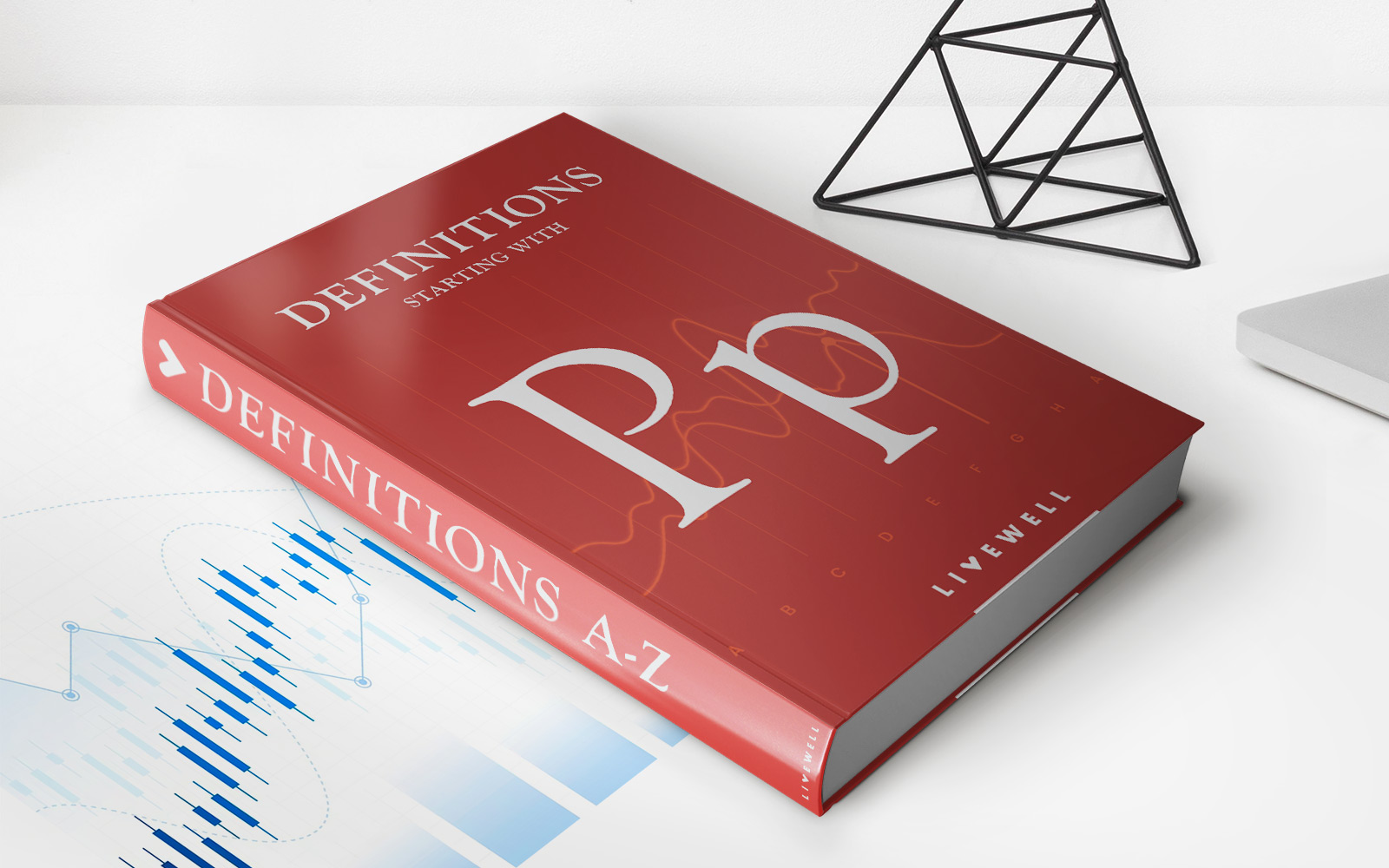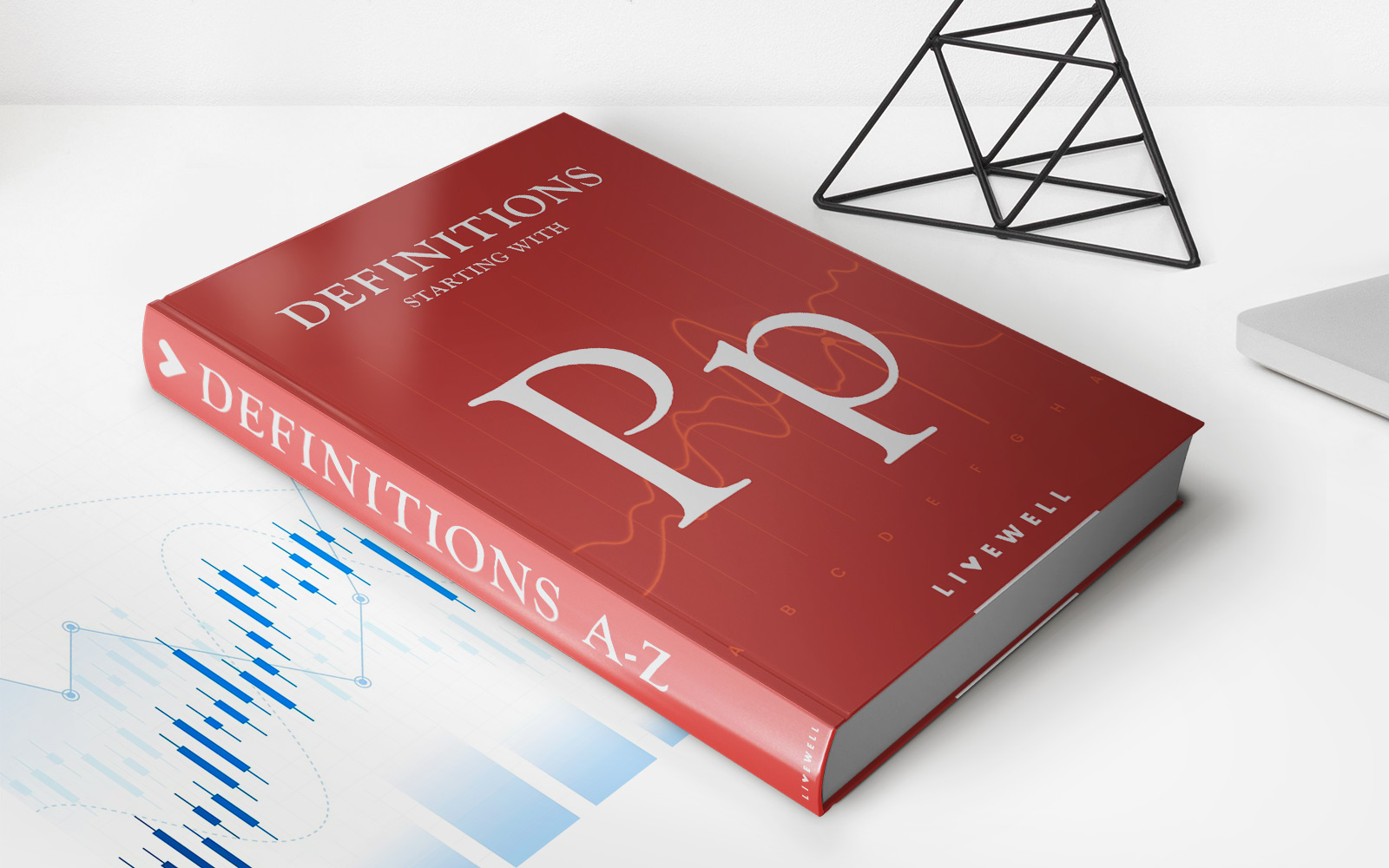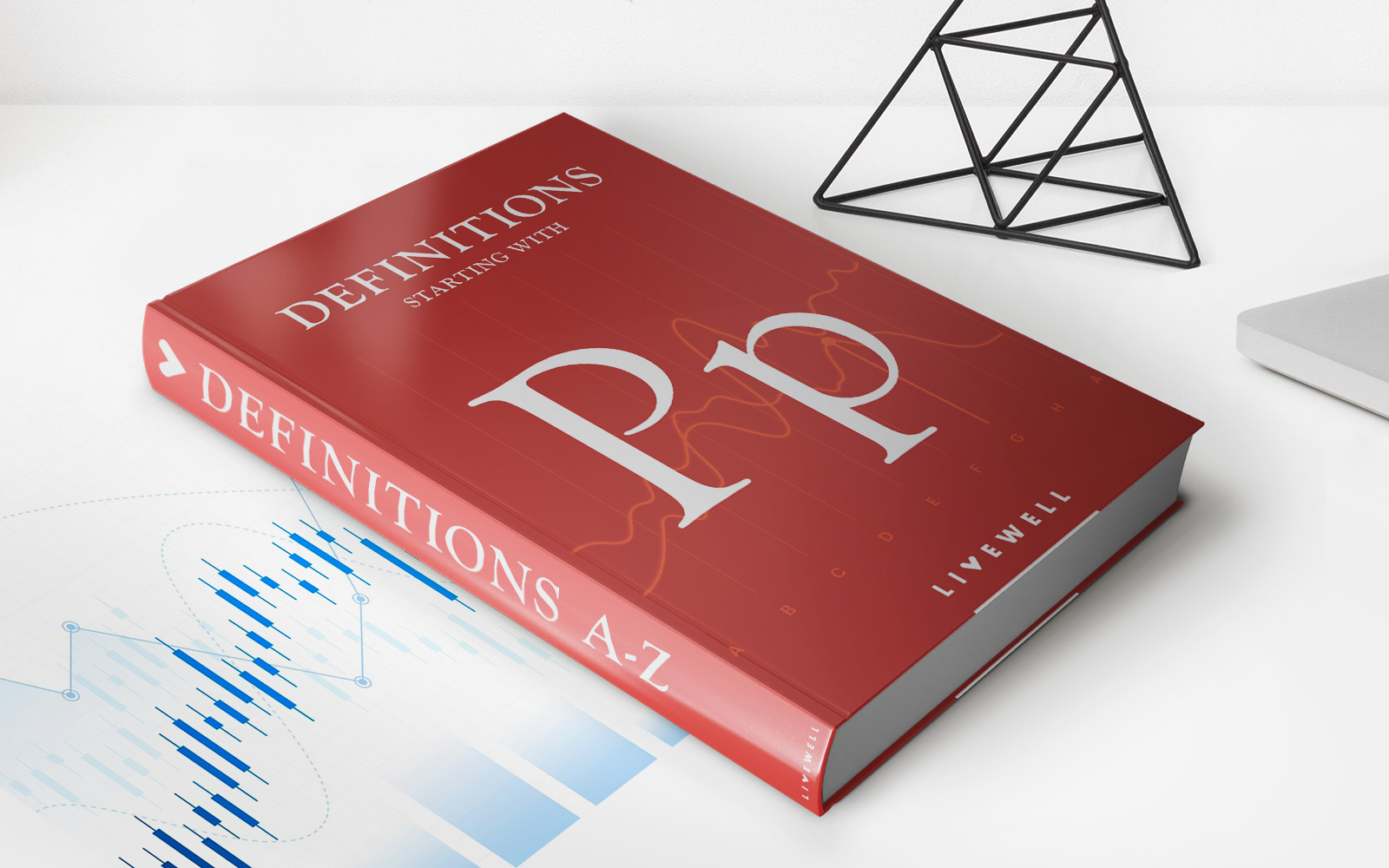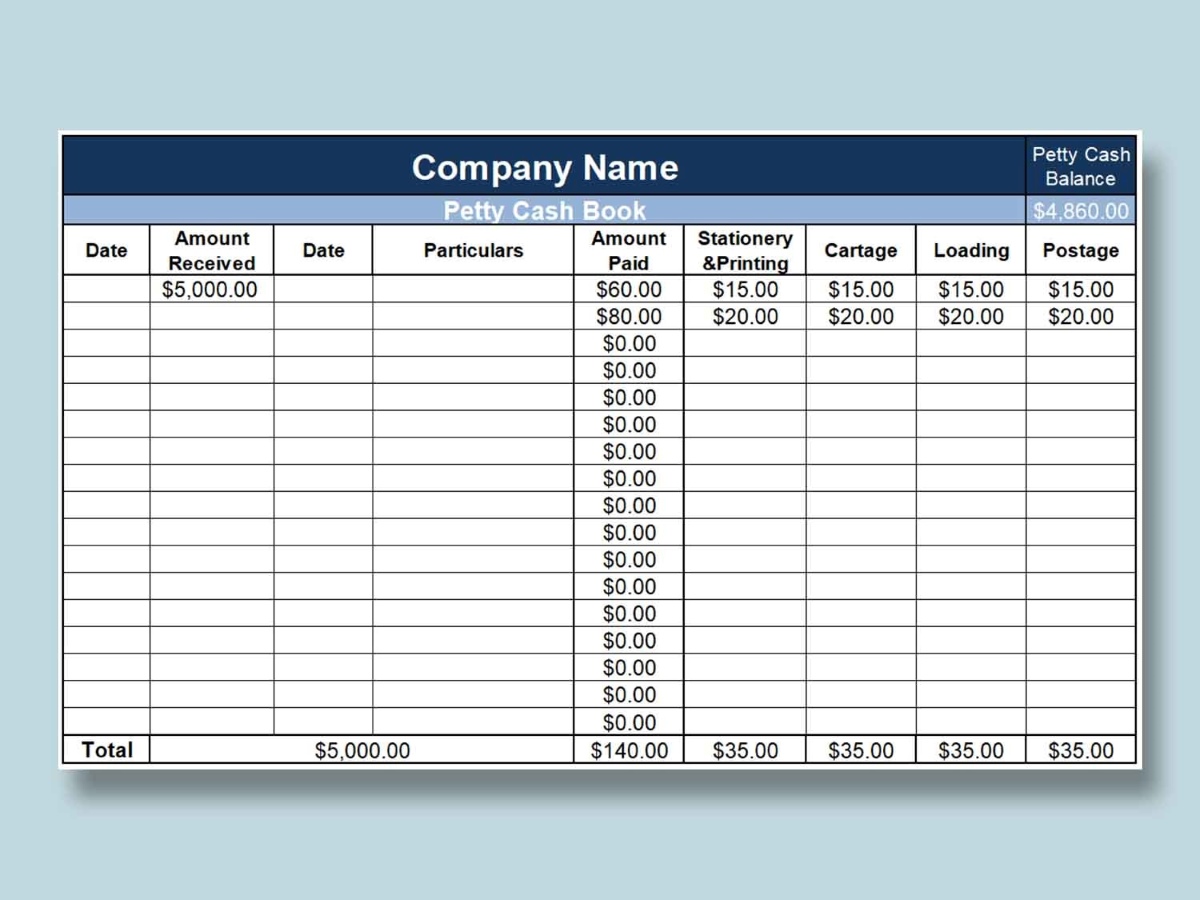

Finance
What Is A Pooled Investment Fund?
Published: October 16, 2023
Discover the benefits of pooled investment funds in the finance industry. Learn about their structure, advantages, and how they can help diversify your investment portfolio.
(Many of the links in this article redirect to a specific reviewed product. Your purchase of these products through affiliate links helps to generate commission for LiveWell, at no extra cost. Learn more)
Table of Contents
- Introduction
- Definition of a Pooled Investment Fund
- Types of Pooled Investment Funds
- Benefits of Pooled Investment Funds
- Risks Associated with Pooled Investment Funds
- How Pooled Investment Funds Work
- Regulations and Oversight of Pooled Investment Funds
- Factors to Consider Before Investing in a Pooled Investment Fund
- Conclusion
Introduction
A pooled investment fund is a financial vehicle that allows multiple investors to pool their money together into a single fund managed by a professional investment manager. These funds provide individual investors access to diversified portfolios of assets that would be difficult or expensive to access on their own. Pooled investment funds, also known as collective investment schemes, are a popular option for both retail and institutional investors looking to achieve their financial goals.
By pooling their resources, investors benefit from economies of scale, as the fund manager can spread the costs of investing across a larger asset base. This can result in lower investment fees and expenses for individual investors, making pooled investment funds an attractive option for those with limited investment capital. Additionally, these funds offer a level of professional management and expertise, allowing investors to benefit from the knowledge and experience of seasoned investment professionals.
Pooled investment funds come in various forms, including mutual funds, exchange-traded funds (ETFs), hedge funds, and private equity funds. Each of these fund types has its own unique characteristics, investment strategies, and regulatory requirements. Understanding the different types of pooled investment funds is crucial for investors to align their investment objectives with the appropriate fund structure.
While pooled investment funds have many benefits, it’s important to note that they also come with risks. Investors must carefully consider factors such as investment objectives, risk tolerance, and investment time horizon before investing in a pooled fund. Additionally, investors should familiarize themselves with the regulatory framework and oversight policies governing these funds to ensure transparency and investor protection.
In this article, we will delve into the world of pooled investment funds, exploring their definition, types, benefits, risks, operation, regulations, and important factors to consider before investing in them. By the end, you will have a comprehensive understanding that will enable you to make informed decisions about including pooled investment funds in your investment portfolio.
Definition of a Pooled Investment Fund
A pooled investment fund is a collective investment vehicle where multiple investors contribute their money to create a common pool of funds. These funds are then professionally managed by an investment manager or a team of managers who make investment decisions on behalf of the investors.
Pooled investment funds are designed to provide investors with access to a diversified portfolio of securities, such as stocks, bonds, or other financial instruments. The funds pool the resources of multiple investors, allowing for larger investments and greater diversification than what individual investors could achieve on their own.
One of the key features of a pooled investment fund is that investors purchase shares or units in the fund. These shares or units represent a proportional interest in the fund’s assets and income. The value of these shares or units fluctuates based on the performance of the underlying investments held by the fund.
There are different types of pooled investment funds available to investors, including:
- Mutual Funds: These are investment funds that are open to the public and managed by professional investment companies. Investors can buy or sell shares of the mutual fund at the fund’s net asset value (NAV) at the end of the trading day.
- Exchange-Traded Funds (ETFs): These funds are similar to mutual funds but trade on stock exchanges throughout the day. ETFs offer investors the flexibility of buying and selling shares at market prices.
- Hedge Funds: Hedge funds are privately managed investment funds that are typically available only to accredited or institutional investors. Hedge funds use various investment strategies to generate higher returns, including leveraging, short-selling, and derivatives.
- Private Equity Funds: These funds invest in privately held companies with the objective of providing capital, expertise, and support for their growth and expansion. Private equity funds have longer investment horizons and typically only accept investments from institutional or high-net-worth investors.
It’s important to note that while a pooled investment fund provides investors with the opportunity for greater diversification and professional management, it also carries risks. The performance of the funds is subject to market conditions, and there is no guarantee of returns or protection of capital. Investors should carefully consider their investment objectives, risk tolerance, and seek professional advice before investing in pooled investment funds.
Types of Pooled Investment Funds
There are several types of pooled investment funds available to investors, each with its own unique characteristics, investment strategies, and regulatory requirements. Understanding the different types of pooled investment funds can help investors align their investment objectives with the appropriate fund structure. Here are some common types of pooled investment funds:
- Mutual Funds: Mutual funds are investment vehicles that pool money from multiple investors to invest in a diversified portfolio of securities. These funds are managed by professional investment companies and offer various investment strategies, such as equity funds, bond funds, index funds, or sector-specific funds. Investors can buy or sell shares of the mutual fund at the fund’s net asset value (NAV) at the end of the trading day.
- Exchange-Traded Funds (ETFs): ETFs are similar to mutual funds but trade on stock exchanges throughout the day. They aim to track the performance of specific market indices, sectors, or asset classes. ETFs offer investors the flexibility of buying and selling shares at market prices. They provide instant diversification and liquidity while allowing investors to access specific market segments easily.
- Hedge Funds: Hedge funds are privately managed investment funds that employ advanced investment strategies and techniques to generate higher returns. These funds can use leverage, short-selling, derivatives, and other complex strategies to potentially provide positive returns in both rising and falling markets. Hedge funds are typically available only to accredited or institutional investors due to their higher risk profile and minimum investment requirements.
- Private Equity Funds: Private equity funds pool capital from institutional investors and high-net-worth individuals to invest in privately-held companies. These funds aim to provide capital, strategic guidance, and operational support to help these companies grow and generate sustainable returns. Private equity funds usually have longer investment horizons and often participate in buyouts, venture capital, or distressed asset investing.
- Real Estate Investment Trusts (REITs): REITs are pooled investment funds that invest in income-generating real estate properties. They allow investors to gain exposure to the real estate market without directly owning physical properties. REITs generate income from rental properties, mortgage interests, or property sales, and distribute the majority of their earnings to shareholders in the form of dividends.
It’s important for investors to carefully consider the investment objectives, risk tolerance, and time horizon before investing in a specific type of pooled investment fund. Each fund type comes with its own set of risks and potential returns. Consulting with a financial advisor or conducting thorough research can help investors make informed decisions about which type of pooled investment fund aligns with their investment goals.
Benefits of Pooled Investment Funds
Pooled investment funds offer several benefits to investors, making them a popular choice for both individual and institutional investors. Here are some key advantages of investing in pooled investment funds:
- Diversification: Pooled investment funds allow investors to access a diversified portfolio of assets. By pooling money from multiple investors, fund managers can invest in a wide range of securities across different sectors, regions, and asset classes. Diversification helps to spread risk and potentially enhance returns by reducing exposure to any single investment.
- Professional Management: Pooled investment funds are managed by experienced investment professionals who have the expertise and knowledge to make informed investment decisions. These fund managers conduct comprehensive research, monitor market trends, and adjust the fund’s portfolio accordingly to maximize returns and mitigate risk. Investors benefit from the fund manager’s expertise without having to actively manage their investments.
- Liquidity: Many pooled investment funds, such as mutual funds and ETFs, offer daily liquidity. Investors can easily buy or sell their shares at the fund’s net asset value (NAV) at the end of each trading day. This provides investors with flexibility and the ability to adjust their investment positions according to their financial goals or changing market conditions.
- Cost Efficiency: Pooling resources through a pooled investment fund allows investors to benefit from economies of scale. The fund’s expenses, such as transaction costs and management fees, are shared among all the investors, reducing the costs of investing. Additionally, institutional investors can access certain investment opportunities that might be otherwise unavailable or costly for individual investors.
- Accessibility: Pooled investment funds provide investors with access to markets and investment strategies that may be challenging or costly to access directly. For individual investors, these funds offer the opportunity to invest in a diversified portfolio with relatively low investment capital. Additionally, some funds, like ETFs, trade on stock exchanges, providing investors with easy access to various market segments and sectors.
- Transparency: Pooled investment funds are subject to regulatory requirements that mandate transparency and disclosure. Fund managers are required to provide regular reports and updates on the fund’s performance, holdings, and fees. This transparency allows investors to make informed investment decisions and closely monitor their investments.
These benefits make pooled investment funds an attractive choice for investors seeking professional management, diversification, cost efficiency, liquidity, and accessibility. However, it’s important for investors to carefully evaluate each fund’s investment objectives, risks, and potential returns before making investment decisions. Conducting thorough research and consulting with a financial advisor can help investors select the most suitable pooled investment funds to achieve their financial goals.
Risks Associated with Pooled Investment Funds
While pooled investment funds offer several benefits, it’s essential for investors to be aware of the potential risks involved. Here are some key risks associated with investing in pooled investment funds:
- Market Risk: Pooled investment funds are subject to market fluctuations and volatility. The value of the fund’s assets can rise or fall due to various factors, including economic conditions, geopolitical events, and investor sentiment. Investors should be prepared for the possibility of losses and fluctuations in the value of their investments.
- Liquidity Risk: Although many pooled investment funds offer daily liquidity, there may be circumstances where it becomes difficult to sell shares or units at the desired price or time. In times of market stress or when the underlying assets of the fund are illiquid, the fund may impose temporary restrictions on redemptions, limiting investors’ ability to access their funds.
- Concentration Risk: Some pooled investment funds may concentrate their investments in specific sectors, regions, or asset classes. This concentration can expose investors to higher levels of risk if the investments perform poorly or face adverse conditions. It’s crucial for investors to understand the fund’s investment strategy and diversification approach to assess the concentration risk.
- Manager Risk: Pooled investment funds are managed by investment professionals who make investment decisions on behalf of the investors. The performance of the fund relies heavily on the competency and skill of the fund manager. If the manager makes poor investment decisions or fails to adapt to changing market conditions, the fund’s performance may suffer, negatively impacting investors’ returns.
- Fees and Expenses: Pooled investment funds charge fees and expenses, including management fees, administrative costs, and operational expenses. These fees can erode the overall returns of the fund and the individual investor’s investment. Investors should carefully assess the fee structure of the fund and consider the impact on their investment returns.
- Regulatory and Compliance Risk: Pooled investment funds operate within a regulatory framework set by governing authorities. Regulatory changes or non-compliance with regulatory requirements can have an impact on the fund’s operations. Investors should be aware of the regulatory landscape and potential risks associated with the fund being subject to regulatory changes or scrutiny.
It’s important for investors to thoroughly evaluate these risks and consider their own investment objectives and risk tolerance before investing in a pooled investment fund. Conducting due diligence, reviewing the fund’s prospectus, and seeking advice from financial professionals can help in making informed investment decisions. Diversifying investments across different fund types and conducting regular reviews of investment portfolios can also help manage risks associated with pooled investment funds.
How Pooled Investment Funds Work
Pooled investment funds operate by pooling the money of multiple investors into a single fund, which is then managed by a professional investment manager or team of managers. Here’s how pooled investment funds work:
- Investor Contributions: Investors contribute their money by purchasing shares or units in the pooled investment fund. The value of these shares or units is based on the net asset value (NAV) of the fund, which represents the total value of the fund’s assets minus any liabilities.
- Professional Management: The investment manager or team of managers overseeing the pooled investment fund are responsible for making investment decisions on behalf of the investors. They conduct research, perform analysis, and select investments that align with the fund’s investment objectives and strategy.
- Portfolio Diversification: Pooled investment funds aim to provide investors with a diversified portfolio of assets. The fund manager spreads the fund’s investments across different sectors, regions, and asset classes to mitigate risk and potentially enhance returns. This diversification helps reduce the impact of any single investment on the overall fund performance.
- Performance Monitoring: The fund’s performance is regularly monitored by the investment manager. They analyze the performance of the fund’s investments, assess market conditions, and make adjustments to the fund’s portfolio as deemed necessary to achieve the fund’s investment objectives.
- Net Asset Value (NAV): The net asset value (NAV) of a pooled investment fund is calculated by dividing the total value of the fund’s assets by the number of shares or units outstanding. The NAV provides the per-share value of the fund and is typically calculated at the end of each trading day.
- Income Distribution: Pooled investment funds may distribute income generated from the fund’s investments to the investors in the form of dividends or interest payments. The frequency and amount of income distributions vary depending on the fund’s investment strategy and the types of assets held.
- Redemption and Exit: Investors can typically redeem their shares or units in the pooled investment fund on a periodic basis. This allows investors to sell their holdings and receive the proceeds based on the current net asset value (NAV) of the fund. However, there may be restrictions or fees associated with redemption, and certain funds may have minimum holding periods before investors can exit the fund.
Pooled investment funds provide individuals with access to a professionally managed investment portfolio and the opportunity to benefit from economies of scale. By pooling resources, investors can gain exposure to a diversified range of investments that would be difficult or costly to access individually. However, investors should carefully consider the fund’s investment objectives, risks, fees, and other factors before making investment decisions.
Regulations and Oversight of Pooled Investment Funds
Pooled investment funds are subject to various regulations and oversight measures to protect investors and ensure transparency and fairness in the investment process. Here’s an overview of the regulatory framework for pooled investment funds:
Firstly, regulatory requirements vary depending on the type and structure of the pooled investment fund. For example, mutual funds are regulated under securities laws, while hedge funds and private equity funds are subject to different regulations due to their higher risk profile and limited investor eligibility.
The regulatory oversight of pooled investment funds is typically conducted by government agencies or regulatory bodies. These entities establish rules and guidelines to promote investor protection, maintain market integrity, and mitigate systemic risks. Some common regulatory measures include:
- Disclosures and Prospectus: Pooled investment funds are required to provide investors with detailed information about their investment objectives, strategies, fees, risks, and performance. This information is typically outlined in a prospectus, which investors should review before investing in the fund.
- Registration and Licensing: Many jurisdictions require pooled investment funds and their managers to register with regulatory authorities. This ensures that fund managers meet certain competency standards and adhere to regulatory requirements, providing investors with a level of confidence in the fund’s management and operations.
- Reporting and Transparency: Pooled investment funds are required to regularly report to regulators and investors. This includes providing periodic financial statements, portfolio holdings, and other relevant information to enable investors to make informed decisions. Regular reporting promotes transparency and helps detect any potential misconduct or fraudulent activities.
- Valuation and Pricing: Pooled investment funds must have clear and consistent policies for valuing their assets. Accurate and fair valuation ensures that investors receive an accurate reflection of the fund’s net asset value (NAV) and prevents the manipulation of share prices.
- Investor Protections: Regulatory oversight aims to protect the interests of investors. This includes measures to prevent fraud, impose fiduciary responsibilities on fund managers, and establish rules regarding the custody and safekeeping of fund assets. Investors have the right to expect fair treatment and the enforcement of their legal rights.
- Risk Management: Regulators often require pooled investment funds to have robust risk management frameworks in place. This includes monitoring and managing various risks such as market risk, liquidity risk, counterparty risk, and operational risk. Risk management practices help protect investors and maintain the stability of the financial system.
Investors should be aware of the regulatory framework governing pooled investment funds in their jurisdiction and understand the associated risks and investor protections. Consulting with a financial advisor or conducting independent research can provide valuable insights into the regulatory landscape and help investors make informed decisions regarding their investments.
Factors to Consider Before Investing in a Pooled Investment Fund
Investing in a pooled investment fund requires careful consideration of various factors to ensure that the fund aligns with your investment goals and risk tolerance. Here are some key factors to consider before investing:
- Investment Objectives: Determine your investment objectives, such as capital appreciation, income generation, or wealth preservation. Different pooled investment funds may have varying investment goals, so it’s important to select a fund that aligns with your investment objectives.
- Risk Profile: Assess your risk tolerance and determine the level of risk you are comfortable accepting. Pooled investment funds can range from low-risk options, such as bond funds, to high-risk options like hedge funds. Understanding your risk appetite will help you select a fund that matches your comfort level.
- Performance Track Record: Review the historical performance of the pooled investment fund. While past performance is not a guarantee of future results, it can provide insights into the fund’s ability to achieve its investment objectives. Analyze the fund’s returns over various time periods and compare them to relevant benchmarks or peer funds.
- Expense Ratio: Consider the fund’s expense ratio, which represents the annual expenses of the fund as a percentage of its assets. Lower expense ratios can directly impact your investment returns. Compare expense ratios among similar funds to ensure you are getting good value for your money.
- Investment Strategy: Understand the fund’s investment strategy and how it aligns with your investment goals. Consider the types of assets the fund invests in, geographical focus, and any specific investment themes or sectors it targets. Ensure that the fund’s strategy is consistent with your investment preferences.
- Fund Management: Evaluate the experience and track record of the fund manager or management team. Review their qualifications, investment approach, and their ability to consistently execute the fund’s investment strategy. A skilled and experienced fund management team can greatly impact the fund’s performance.
- Fund Size and Liquidity: Consider the size of the fund and its liquidity. A large fund may face challenges in allocating capital efficiently and may be restricted in pursuing certain investment opportunities. Additionally, assess the fund’s liquidity provisions to ensure that you can easily buy or sell shares when needed.
- Regulatory Compliance: Verify that the pooled investment fund and its managers are compliant with all regulatory requirements and are properly licensed. This ensures that the fund operates within established regulations and provides a level of investor protection.
- Independent Research and Professional Advice: Conduct thorough research or seek the guidance of a qualified financial advisor. Independent research can provide valuable insights into the fund’s performance, strategy, and risk factors. A financial advisor can help assess your investment goals and recommend suitable fund options.
By carefully considering these factors, investors can make informed decisions about investing in a pooled investment fund that aligns with their investment objectives, risk tolerance, and preferences. It’s important to continuously monitor the fund’s performance and periodically review your investment strategy to ensure it remains aligned with your financial goals.
Conclusion
Pooled investment funds offer investors a convenient and diversified way to invest in a wide range of assets, managed by professional investment managers. They provide numerous benefits, including diversification, professional management, cost efficiency, accessibility, and transparency.
However, investors must also be aware of the risks associated with pooled investment funds, such as market fluctuations, liquidity limitations, concentration risks, and regulatory compliance. Understanding these risks is crucial for making informed investment decisions and aligning investments with individual risk tolerance and objectives.
Before investing in a pooled investment fund, consider factors such as investment objectives, risk profile, performance track record, expense ratio, investment strategy, fund management, fund size, and regulatory compliance. Conducting thorough research and seeking advice from financial professionals can greatly assist in selecting the most suitable fund.
Remember, investing in pooled investment funds should be part of a well-diversified portfolio and should align with your overall financial plan. Regularly monitor the performance of the fund and review your investment strategy to ensure it remains in line with your goals and risk tolerance.
In conclusion, pooled investment funds offer a valuable opportunity for investors to access professional management, diversification, and market exposure. By considering the factors discussed in this article, investors can navigate the world of pooled investment funds with confidence and make informed investment decisions to help achieve their financial objectives.














